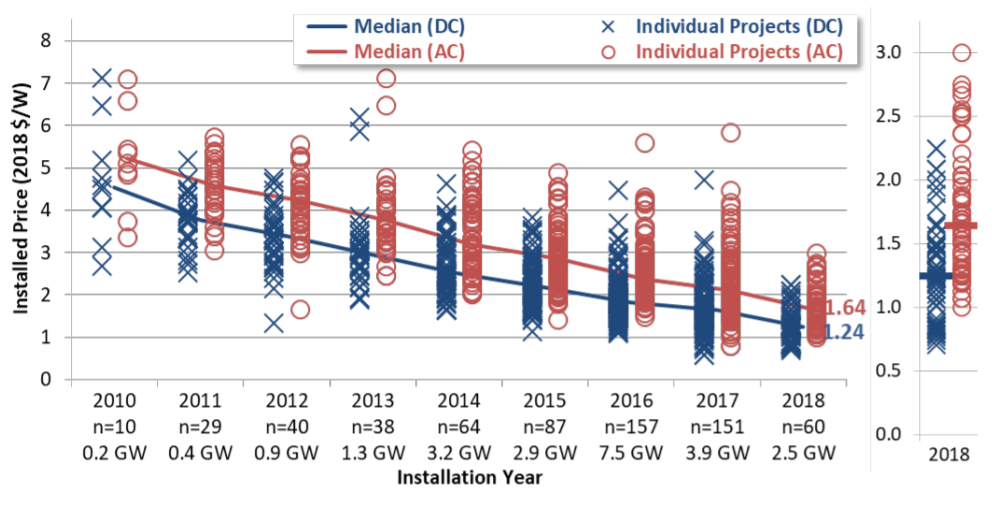The One Billion Dollar Solar Failure in Nevada
A solar thermal plant in Nevada is the latest in the long list of Obama administration energy failures. The Crescent Dunes solar facility remains on the hook to repay $737 million in loan guarantees from the federal government, according to Bloomberg. Unlike solar facilities in Minnesota, which use photovoltaic (PV) panels to turn sunlight into electricity, the Crescent Dunes plant used an array of mirrors to heat a tank filled with molten salt that would then heat water to generate steam and electricity.
The difference between solar pv and thermal solar plants like Crescent Dunes is important because PV panels have seen a reduction in cost of about 80 percent since 2010, causing solar thermal plants to fall out of favor with developers. As a result, solar thermal projects like Crescents Dunes are going belly up. But according to the Obama administration, it wasn’t supposed to be this way.
According to Bloomberg:
In 2011 the $1 billion project was to be the biggest solar plant of its kind, and it looked like the future of renewable power. Citigroup Inc. and other financiers invested $140 million with its developer, SolarReserve Inc. Steven Chu, the U.S. Department of Energy secretary at the time, offered the company government loan guarantees, and Harry Reid, then the Senate majority leader and senior senator from Nevada, cleared the way for the company to build on public land. At a Washington celebration of SolarReserve’s public funding, Chief Executive Officer Kevin Smith told the assembled politicians, “We’re proud to be doing our part to win the future.”
It appears the future was lost, as the facility has been shut down since last April after the facility lost its last customer because the solar installation was too unreliable. According to the Bloomberg article, the cost of generating electricity from Crescent Dunes was $135 per megawatt hour, which is about 4.2 times more than the electricity generated at the Sherburne County coal plant in Becker, Minnesota.
Solar advocates will argue that the declining cost of solar PV is reason to continue building it, but they are missing the point. It is true that solar PV costs have fallen about 80 percent since 2010, according to Lawrence Berkeley Labs data, but solar panels are still more expensive (and less useful) new natural gas plants.

The main problem with the government getting involved in subsidizing and mandating particular energy sources is that these policies try to prevent winners from winning and keep losers from losing. In the case of the Crescent Dunes solar array, even nearly $1 billion in taxpayer money wasn’t enough to keep it afloat.